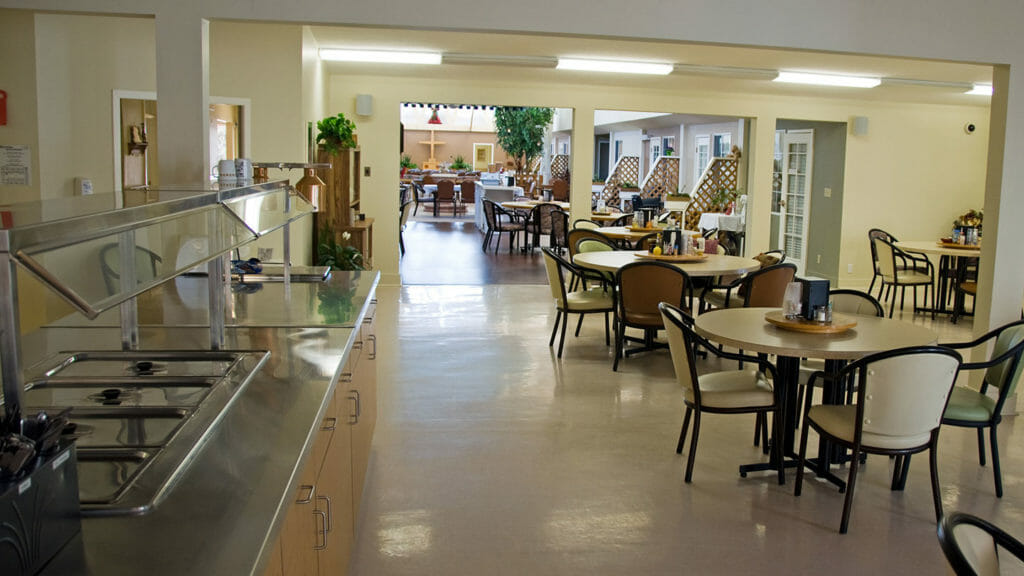
U.S. nursing homes have widely been credited for gradually building occupancy levels back to more than 72% nationally after hitting record lows during the height of the pandemic. But that number is likely unintentionally inflated by about 3.5% and could be doing providers significant harm as they make a case for more government support, one veteran industry analyst believes.
The key is how some providers are reporting lower bed capacities to federal authorities after voluntarily taking beds out of service, said Marc Zimmet, president and CEO of Zimmet Healthcare Services Group. That inaccurately portrays a service sector that is smaller than it actually is, he said.
Nursing homes actually now sit at about 69.8% occupancy, a much farther gap from the pre-pandemic level of 80% than most are touting, he told McKnight’s Long-Term Care News.
“The reason we’re getting 72% now is because facilities are taking beds out of service unofficially” due to fewer referrals or demand, or due to staffing shortages, Zimmet noted. “It’s starting to look like the industry is recovering, but it isn’t, and they still have all that overhead. That’s the start of trouble.
“It’s all about winning relief,” he explained. “The industry’s in distress and the number being thrown around every single day is 72%, myself included, and we’re telling the world we’re in better shape than we are.”
Zimmet said he stumbled upon the “quirk” while performing due diligence for a client considering the purchase of a facility in Mississippi. Cost reports reflected 160 beds on site, but the provider’s own reporting showed 120 beds in the federal COVID-19 vaccination reporting database. It had voluntarily taken some beds offline. Occupancy had held steady at just more than 100 patients, thus boosting relative occupancy when taking the smaller reported capacity into account.
“What it trickles down to is a severe resetting of rate structures,” Zimmet said. “A 160-bed facility gets itself in a lot of trouble if it acts like a 120-bed facility.”
He said he found similar calculations on another facility he was advising the same day. Instead of 85% occupancy, it really was at about 60%. He said this led his firm and its new EcapINTEL arm to take a broader look at federal data. When that was complete, he said 10 out of 10 samples showed the same type of distortion.
His team ran data on every facility — more than 11,000 — that both was entered in the federal COVID database and had a 2540 cost report for 2020.
Zimmet estimates at least 55,000 nursing home beds have been voluntarily made inactive since the start of pandemic — and possibly many, many more. He says it’s a trend that is likely to continue, and not reverse, as a nationwide drive for more single rooms and home-based care picks up steam.
“It’s a really quirky curiosity that doesn’t sound that important, but is important,” he said. “If occupancy recovery is off 3.5%, that’s a pretty big statistic. We found it in every state but Alaska. It hit me like a ton of bricks.”
“If I’m a policy maker looking at a state and trying to figure out whether to give relief to an industry, I’m going to use occupancy as an indicator. If an industry or state closes off or temporarily mothballs another 10% of their beds, which is completely likely, it’s going to look like we’re back up to … like we recovered” from pandemic census losses, he added.
More beds are going off line “every month,” Zimmet continued. Anecdotally, it’s an observation confirmed by several industry experts McKnight’s consulted. None estimated a number as big as Zimmet’s staunchly defended 55,000 projection — not yet at least — but they admitted it was difficult to be certain.
“Clients are looking to close beds and wings, but I’d be surprised if the impact is 55,000 beds,” Melissa Brown, COO of Gravity Healthcare Consulting said on Tuesday. “The ultimate point is don’t trust NHSN data if you’re looking to buy or acquire a building. You need to look at facility-specific data.”
She said part of any possible data-distortion issue could be that employees are wearing so many different hats during the ongoing public health emergency. They could be inadvertently making mistakes or miscalculations.
“It wouldn’t be a surprise to me,” she said. “It just goes back to the fact that lots of people are doing a job they’re not supposed to be doing, or maybe don’t have the training or expertise. Administrators could be passing trays.”
She told McKnight’s that the mid-70% census numbers so popularly touted are not true in many places.
“I’m seeing a lot of places at 50% or 60%,” she noted. “It’s recovered somewhat, but people are not really a lot better off than a year ago census-wise.”
She said that numerous high-quality provider clients have been considering decertifying beds, or putting them in escrow. In states where it’s allowed, escrow can grant providers up to a year to determine whether they want to take beds permanently offline.
“I think many smart providers probably will [decertify beds] before it’s too late,” she said. “The writing is on the wall: The transition is underway. Now is the time to think about where you will be five years from now.”
She envisions a future when nursing homes will be more like hospital step-down units. Much more care will be delivered in a person’s own home, likely with the help of outsiders at night and in the morning.




